Sudden, accidental, unexplained or suspicious deaths – The Coroner and their records – Part Two
- 23rd April 2025
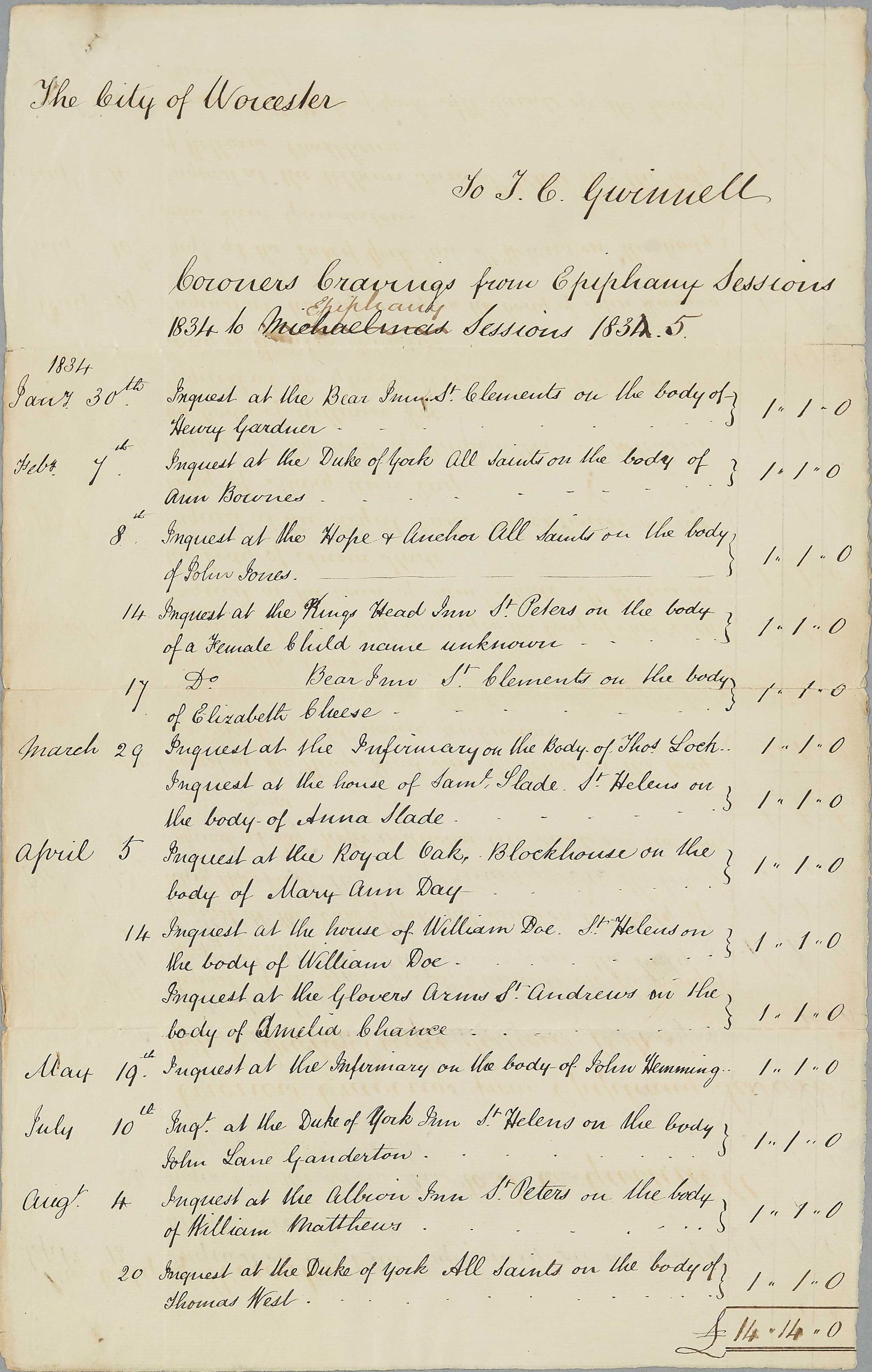
A list of Coroner’s Inquests held in Worcester City recorded in Coroners’ Cravings – Epiphany Sessions, 1834-1835 at Finding No: BA9360/9/14 © WAAS
What historic and modern Coroner’s records do we hold?
Worcestershire Archives, as parent body and approved Place of Deposit on behalf of WCC holds historic and modern Coroners’ records from the 19th – 21st century. These include records known as ‘Coroners’ Cravings’ which record Inquests in the late 19th century, through to Coroner’s Daily Record, Registers of Deaths and individual Case Papers for the latter half of the 20th century. We do not hold any coroners’ inquests or Case Papers before the end of World War II, though we do hold more recent material for the 21st century. It is important to note that any Coroners’ files such as Case Papers or inquests which are dated within the last 75 years are closed to the general public under the Data Protection Act (2018).
However, should a relative linked to an individual recorded in an Inquest or through specific Case Papers would like to learn more about the circumstances surrounding their death, they can contact the County Coroner. The County Coroner will make a request to Worcestershire Archives to retrieve any relevant files via our online system, which will then be sent to the County Coroner. The Coroner will then review the file(s) and make a decision on what, if any, information can be made available to the relative concerning the named individual, whilst working within access and privacy legislation.
Coroners Daily Record
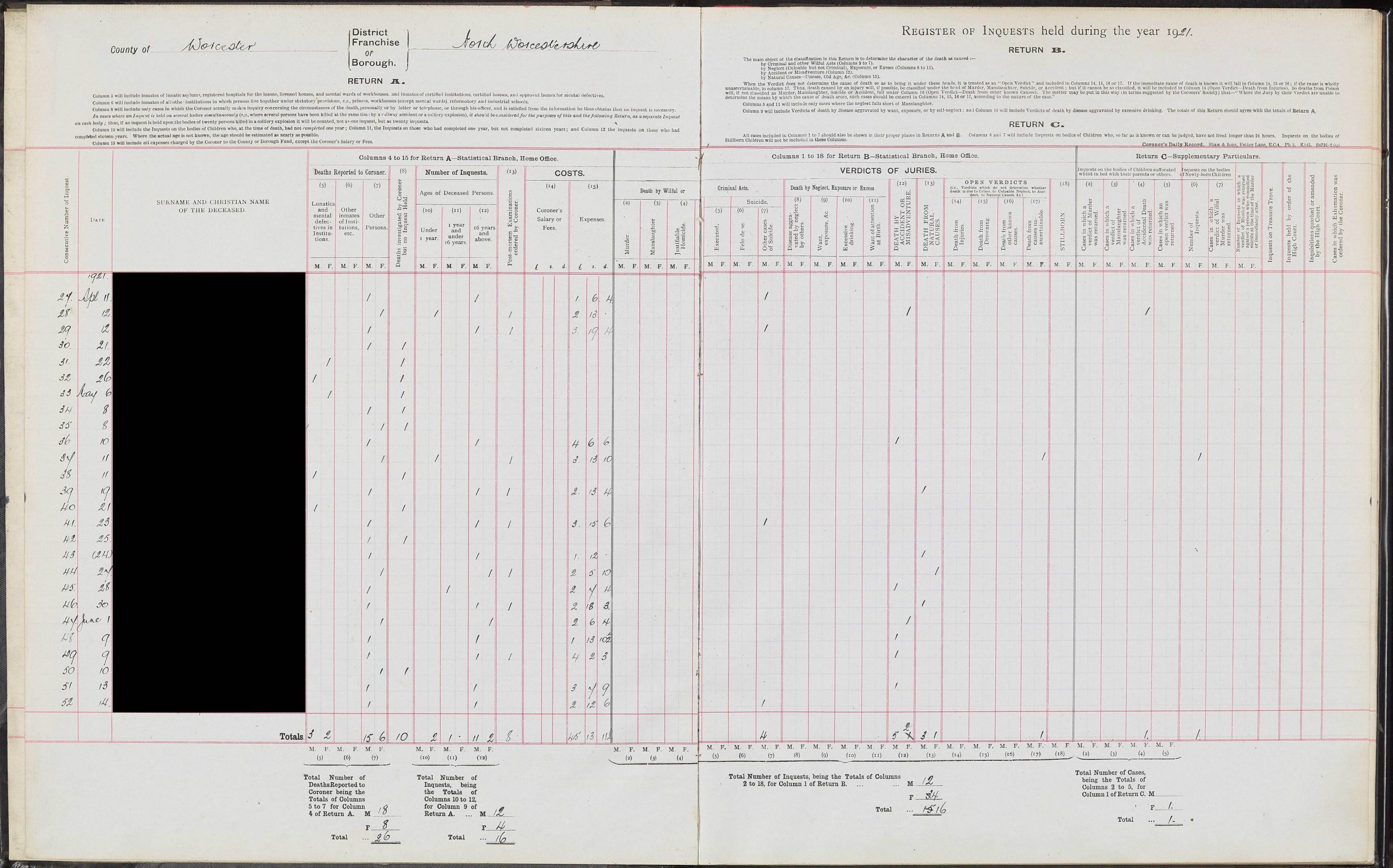
A page taken from the Coroners Daily Record dated during the year 1921 Finding No: b499.2 BA10882.1 (Note: the page has been redacted of any named individuals as part of Data Protection) © County Coroners’ Office
We hold Coroners Daily Record files for the 20th century and record the following information:
- Name
- Deaths reported in institution and other
- Recording where no inquest was held
- Age of the deceased
- Whether a post-mortem was ordered
- Inquest Verdict by Juries
- Supplementary information (cases related to children, newborns, inquests on Treasure Trove, inquests ordered by the High Court and where exhumation was ordered.
These records provide statistical information which can be of particular use to researchers (any personal data contained within must be removed and anonymized as part of Data Protection).
Coroners Cravings
From 1752 to 1860, Coroners were required to file their inquests at the Quarter Sessions and so they may be preserved among the records of Quarter Sessions at local or county record offices. We have some examples for Worcester City, known as Coroner Cravings from the late 19th century, which record inquests for individuals and lists the age of the deceased, occupation, place and time of death, cause and apparent means of death, verdict and sometimes lists where the inquest took place (often held in a Public House) and Coroners’ expenses in pounds, shillings and pence. Coroners were allowed one pound for every inquest held outside gaols and ninepence a mile for their journey from their home to the body, provided the place where the body was found contributed to the county rates.
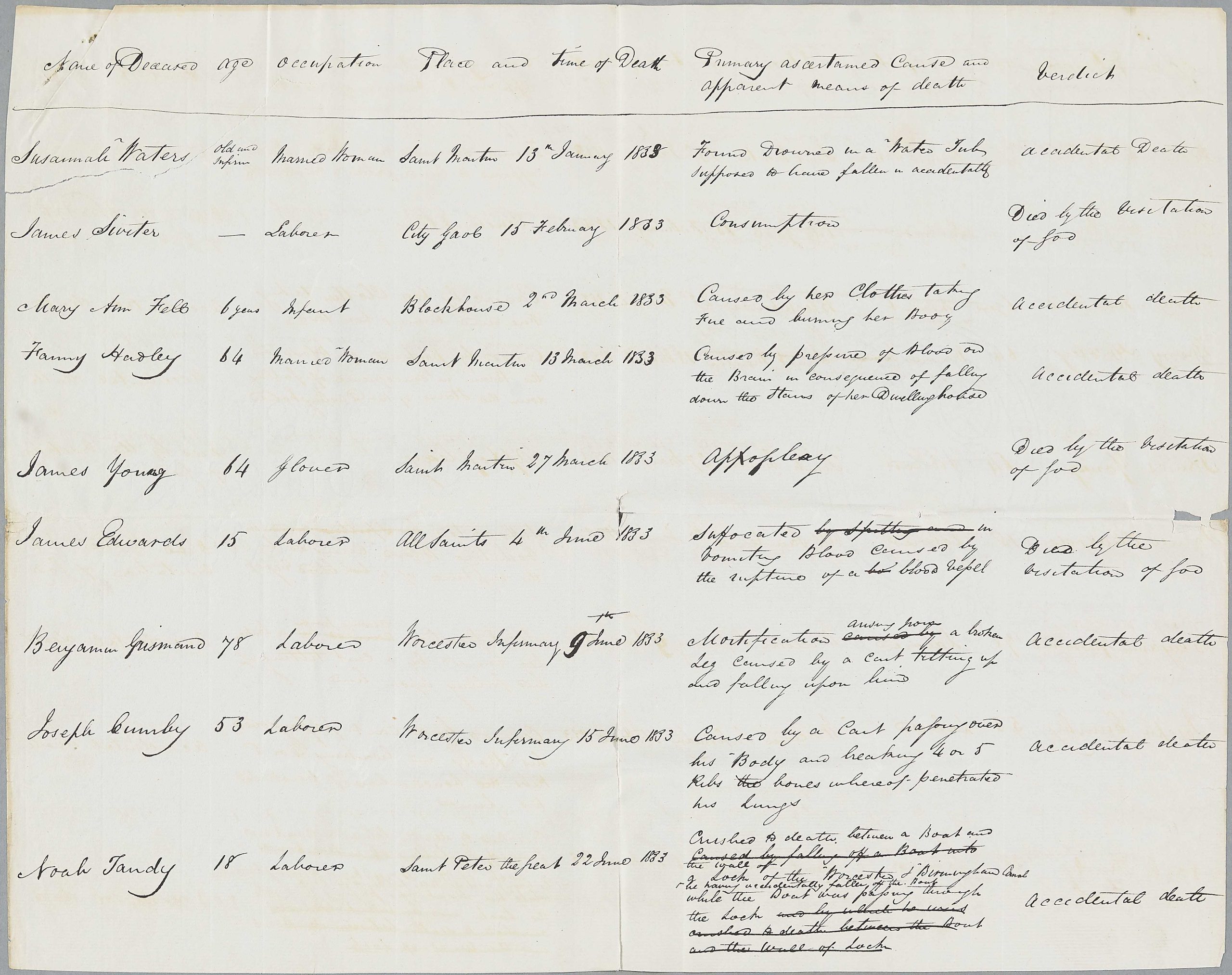
A page taken from ‘All Inquests held by the Coroners for the City of Worcester during the years 1833-1834 and 1835 – made in Conformity with the Circular from the Home Office of 27th June 1836’ Finding No: 496.5 BA9360/Cab 9/Box 14 © WAAS
A page from ‘A Return of All Inquests held by the Coroners for the City of Worcester during the years 1833-1834 and 1835 – made in Conformity with the Circular from the Home Office of 27th June 1836’ at Finding No: 496.5 BA9360/Cab 9/Box 14 gives us a strong sense of the causes of accidental death during the 19th Century. With open fires and the widespread use of candles, it is unsurprising that many deaths were caused by a persons’ clothes catching fire (as in the case of Mary Ann Felt) and deaths also caused by horses and carts (as in the cases of Benjamin Grismand and Joseph Bumby), boats and accidental drowning due to their proximity of working or living near waterways (as in the cases of Susannah Waters and Noah Tandy). Broken legs and open bleeding wounds, due to a lack of proper hygiene and antiseptics could be fatal. Consumption, better known as Tuberculosis (TB) is also reported as the cause of death for one James Siviter – a common disease of the 19th century.
Coroners’ inquests in Newspapers
Due to the paucity of records of Coroners’ inquests prior to World War II the best source for finding inquests for this early period is in local Newspapers such as the Berrows Worcester Journal as these were reported alongside other crimes heard at Quarter Sessions. Below are examples of inquests found in Newspapers for the year 1834 for Amelia Chance and Mary Ann Day as described in Coroners’ Cravings. Amelia at 5 years old is reported to have died of Accidental Death following severe burns from her clothes catching fire, whilst Mary Ann Day a month-old infant, died suddenly with a Verdict of Died by the Visitation of God recorded.

A copy of the Coroners’ inquest for Amelia Chance taken from the Berrows Worcester Journal Newspaper dated 17th April 1834

A copy of the Coroners’ inquest for Amelia Chance taken from the Berrows Worcester Journal Newspaper dated 17th April 1834
The short tale of Elizabeth Cheese

Coroners’ inquest of Elizabeth Cheese taken from the Berrows Worcester Journal Newspaper dated 20th February 1834
Alongside Newspapers, it is possible to learn more about the history of individuals using many of the same resources used for Family History. For instance, using the inquest of Elizabeth Cheese reported in the Berrows Worcester Journal on the 20th February 1834, Elizabeth is reported as being knocked down by the wheel of a carriage and being infirm and deaf, did not hear it approach. The Verdict was given as accidental death. As Elizabeth is living prior to Civil Registration of Births, Deaths and Marriages in 1837 (explained in more detail in the Marriage Registers at The Hive) using Parish registers we can locate her burial entry for Worcester St. Clements as reported in the inquest and Newspaper.
As you can see from the burial entry Elizabeth is aged 63 years and reported to have been living at Hylton Street, Worcester. Elizabeth’s estimated year of birth is 1771 and having undergone a search for other Parish records.
There is a Baptism entry for a James, son of Elizabeth and John Cheese in Worcester St. Clement dated 21st March 1790, which would certainly fit, based on Elizabeth’s age, but there is no conclusive evidence that this is the same Elizabeth Cheese. Then there is a Marriage entry of Banns for an Elizabeth Cheese and John Hall dated 29th July 1812 for Worcester St. Swithin. However, this does not list Elizabeth’s age or that of her husband John and it is surprising that they were not married earlier, if indeed this is the same Elizabeth and John.
As this is before Civil Registration and when women generally did not leave Wills and is too early for both Census and Electoral registers, it is hard to learn more about Elizabeth Cheese who met a sad end on the road near her home. However, with later individuals recorded in the GRO Index, it may be possible to learn more about their lives through family history sources.

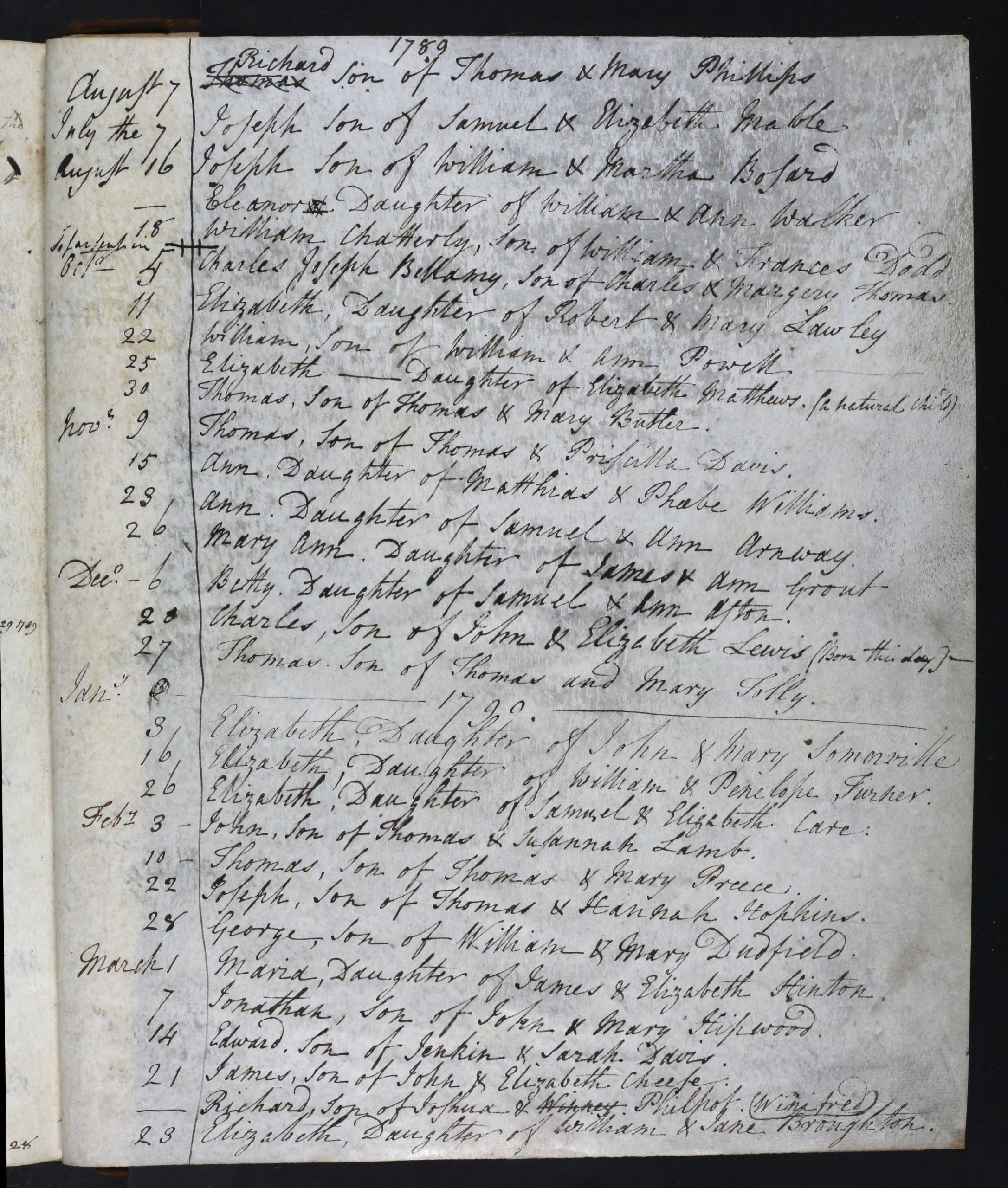
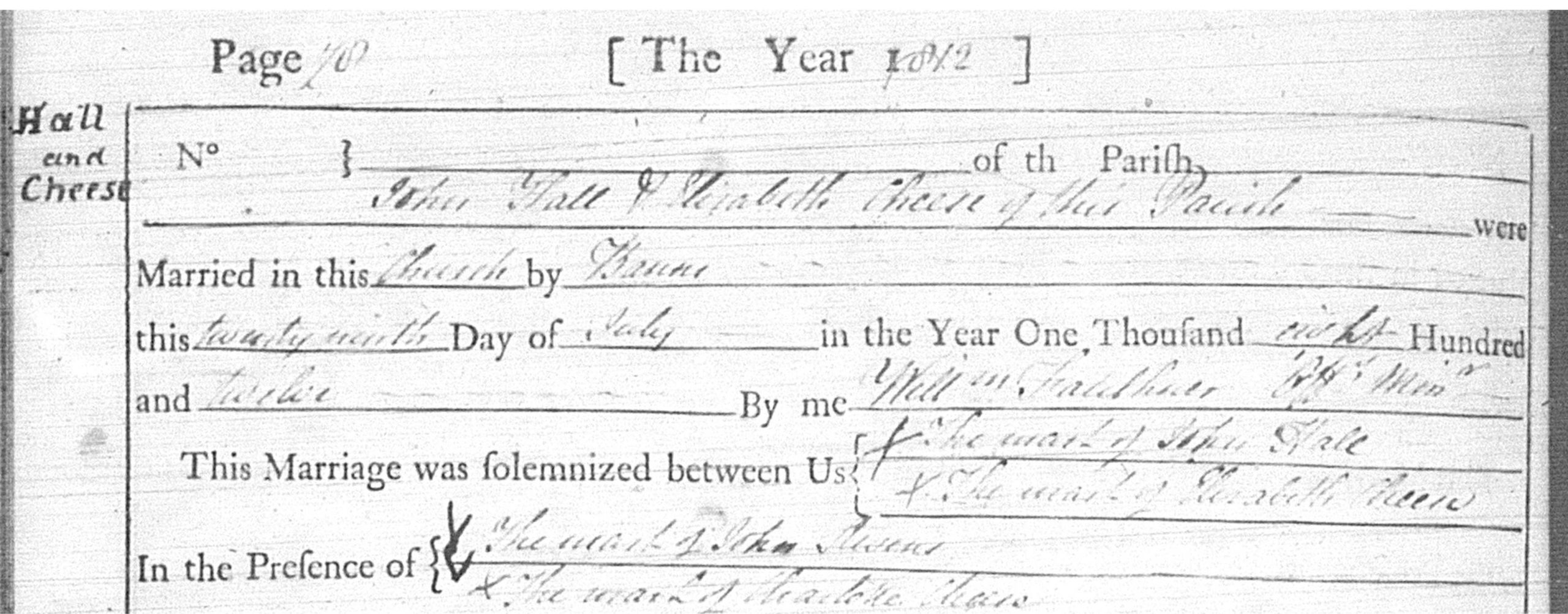
Post a Comment